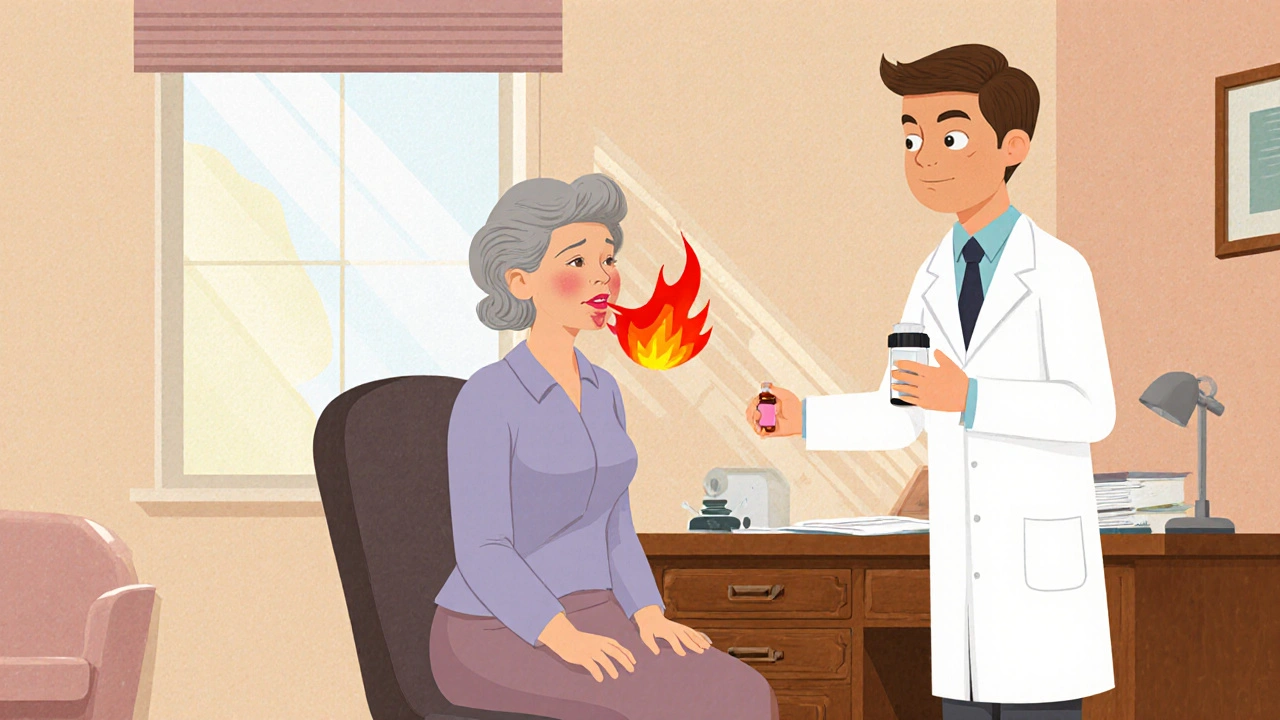Mebeverine for IBS‑Constipation: Benefits, Dosage, and Side Effects
Explore how mebeverine works for IBS‑constipation, including dosage, benefits, side effects, and how it compares with other treatments.
12 CommentsWhenever you start a new medicine, the first thing on many people’s minds is the dreaded "side effects" list. It can feel overwhelming, but understanding these reactions actually puts you in control. This page pulls together the most useful articles on side effects, from antidepressants like Paxil to bone‑health drugs such as bisphosphonates. Below you’ll get clear, bite‑size advice on reading labels, spotting warning signs, and talking to your doctor.
Side effects show up in many ways – a rash, nausea, headaches, or even changes in sleep. The trick is to compare what you feel with the known profile of your drug. For example, Paxil often causes dry mouth and occasional dizziness; bisphosphonates can lead to stomach upset if taken on an empty stomach. Most of our articles include a checklist you can print and keep by your bedside. If something feels off within the first few days, jot it down, note the timing, and reach out to a healthcare professional.
Most side effects are manageable with a few simple steps. Taking medications with food (when allowed) can smooth out stomach irritation – a tip we cover in the Cyclobenzaprine guide. Staying hydrated helps kidneys flush out excess drugs, which can lessen headaches from certain antidepressants. If you’re on gabapentin and notice drowsiness, try adjusting the dose timing with your doctor’s help. Our "When to Switch From Gabapentin" article walks you through signs it’s time for a change and how to transition safely.
Reading the fine print on side effects doesn’t have to be a chore. Look for patterns in the articles listed under this tag: many patients share personal stories about how they dealt with nausea from Synthroid, how they managed eye redness linked to vitamin deficiencies, or how they found relief using dietary supplements like Fever Bark. These real‑world accounts give you a sense of what’s normal and what needs medical attention.
Finally, never ignore severe symptoms. If you develop swelling, trouble breathing, or a rash that spreads quickly, seek emergency care. While most side effects are mild, a few can signal a serious reaction. Keep this page bookmarked – the collection of guides will grow, and you’ll always have a reliable source to turn to when you start a new prescription.

Explore how mebeverine works for IBS‑constipation, including dosage, benefits, side effects, and how it compares with other treatments.
12 Comments
A detailed guide on pramipexole's long‑term effects, covering benefits, risks, monitoring tips, and comparisons for patients with Parkinson's or restless‑leg syndrome.
10 Comments
Explore whether baclofen can relieve Burning Mouth Syndrome, covering how it works, dosage, evidence, side effects, and alternatives in a practical guide.
14 Comments
A clear, up‑to‑date guide on Coreg (carvedilol) covering what it is, how it works, dosage charts, side‑effects, safety tips and FAQs for everyday use.
6 Comments
Explore what Cytotec is, how it's used in women's health, safety tips, myths, and key facts about misoprostol. Get clear, honest info without confusing jargon.
14 Comments
Actos, known by its generic name pioglitazone, is widely used to help manage type 2 diabetes. This article offers a thorough look at how Actos works, its benefits, common and rare side effects, and practical safety tips for real-life use. Learn about new research findings, drug interactions, warnings, and answers to the most common questions. If you're considering Actos or already taking it, this guide has the facts you need in clear, everyday language.
15 Comments